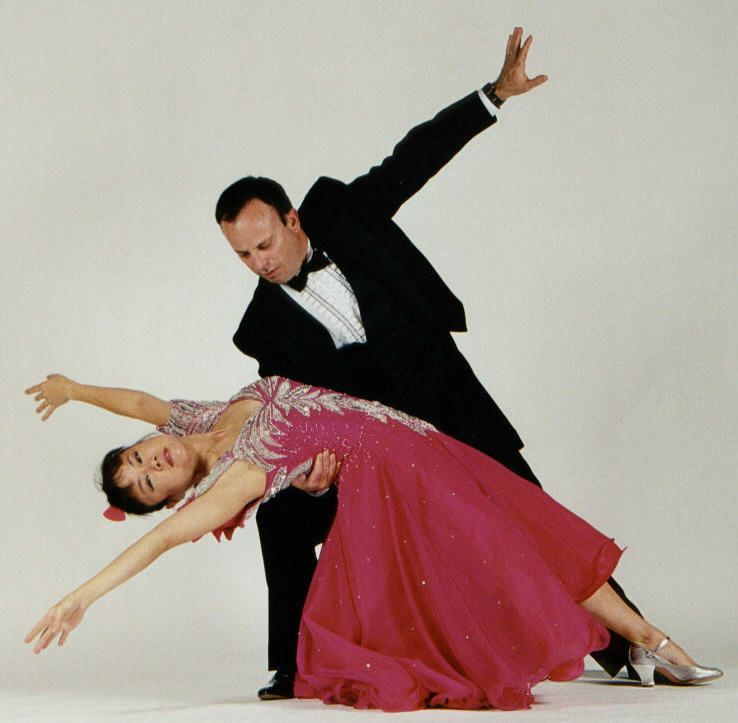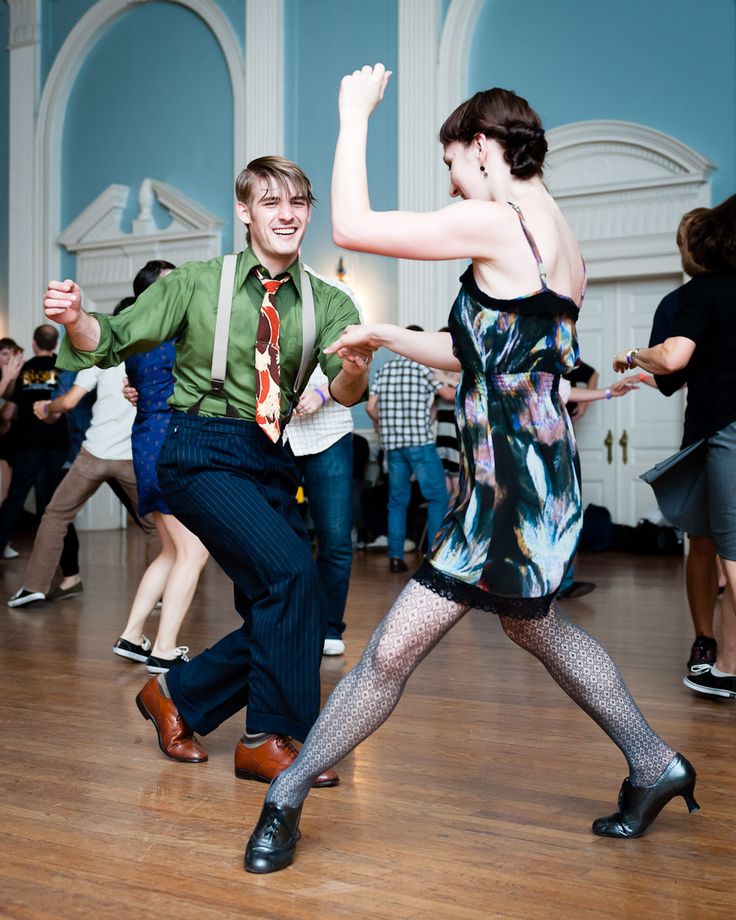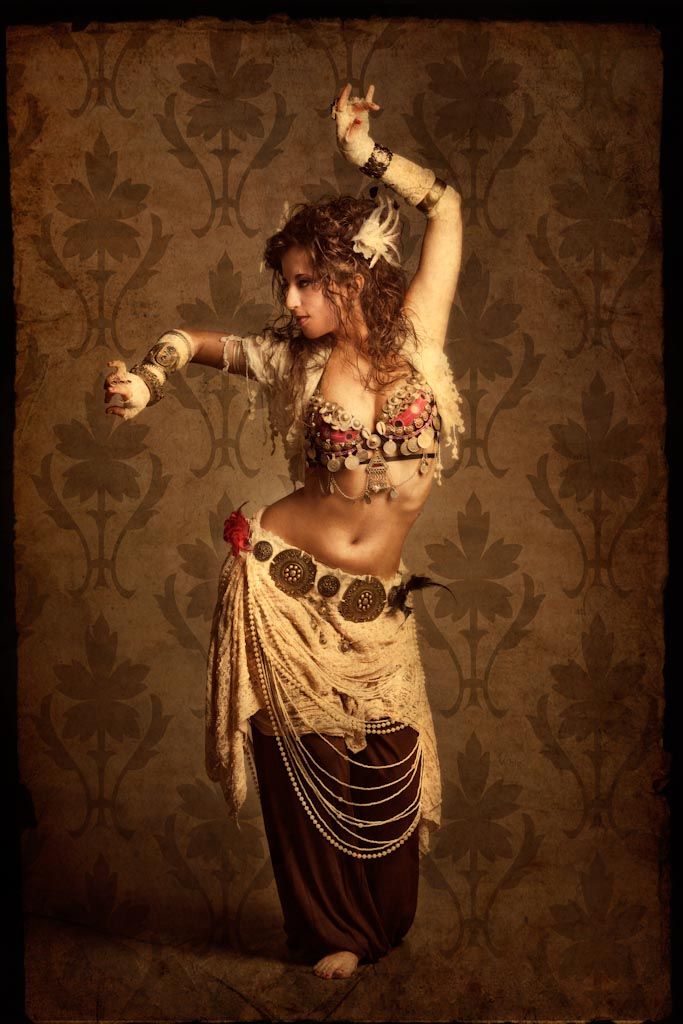How to dance the waltz youtube
Learn Basic Steps For Waltz
Waltz is an elegant, nearly universal dance, perfect for weddings, or almost any social occasion. It's not as hard to learn as most people think.
- Basic steps
- Instructions & Diagrams
- Video
- Recommended Video Lessons »
Quick intro
Waltz dates back to the late 17th century Europe, but has never really been out of fashion and clearly stood the test of time. It should probably be one of the first ballroom dances you learn.
It is a smooth and graceful dance with long, flowing movements, characterized by rise & fall motion. It has a unique 3/4 timing and a simple rhythmic pattern which blends with the music. You can start waltzing very quickly by just learning the simple box step.
Basic steps
The basic step for waltz is a box step. It's named after a pattern it creates on the floor (box or square) and forms the foundation of the dance.
A box step can be divided into two parts - a forward half box and a backward half box. Each half box has three steps - a step forward or backward, a step to the side, and a step to close the feet together.
The leader starts with the left foot and executes a forward half box, followed by a backward half box. The follower performs the opposite – she starts with the right foot and executes a backward half box, followed by a forward half box.
The basic box step pattern uses three counts - slow, quick, quick, which is repeated twice to create the box step. Timing is 1,2,3,1,2,3 or 1,2,3,4,5,6.
Instructions & Diagrams:
When dancing waltz someone has to lead and someone has to follow. Usually the man will lead and the woman will follow.
Men's Steps:
- Step forward with the left foot
- Right foot step sideways to the right
- Bring your left foot next to your right foot
- Step back with the right foot
- Step back sideways with the left foot
- Bring your right foot next to your left foot
Lady's Steps:
- Step back with the right foot
- Left foot step sideways to the left
- Bring your right foot next to your left foot
- Step forward with the left foot
- Step forward sideways with the right foot
- Bring your left foot next to your right foot
Video
In this video Leon and Kim will show you the basic box step.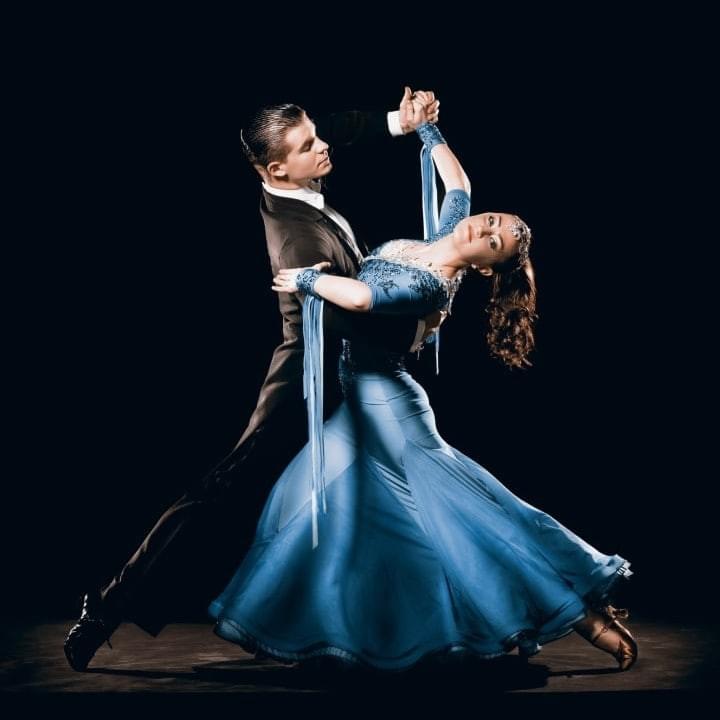 You will also get important tips on rise & fall movement which characterizes this dance:
You will also get important tips on rise & fall movement which characterizes this dance:
more videos »
Once you've mastered the basic box step, it's time to start rotating that box. It will usually be rotated to the left (counterclockwise), so it's called the Left Box Turn. It's quite simple: with each half box, you turn 1/4 of the turn to the left. After two boxes (or four half boxes) you will complete the turn and end up where you began. Then start all over again.
Ok, so now that you know the basic box and how to rotate it, lets continue with basic progressive. Here, as the name implies, the leader will always be moving forwards and the follower backwards. This will enable you to move around the dance floor instead of just dancing on the spot. Here is a clip from Learn & Master Ballroom Dance course that will show you in detail how it's done:
Where to go next?
Now that you know the basics, what's your next step (pun intended ;)? To go to the next level, we recommend one of the video training programs. Here are our recommendations »
Beginner Basic Viennese Waltz Solo Dancing YouTube Lesson
Our weekly YouTube live-stream this week looked at how to dance the Basic Beginner Viennese Waltz dance steps.
We actually ended up looking at the entire syllabus of Viennese Waltz (there are only seven steps). This did mean we covered the Reverse & Natural Fleckerls (Gold level).
Hopefully we have been able to simplify them enough to understand the basic components.
What do we cover in the Beginner Basic Viennese Waltz Lesson?
The Viennese Waltz Basics – Forward & Backward Change Steps
Initially we started the class looking at forward and backward change steps in a straight line. Once the basics had been covered we alternated our forward and back change steps; this time rotating in a box formation whilst also discussing swing and sway.
Once the basics had been covered we alternated our forward and back change steps; this time rotating in a box formation whilst also discussing swing and sway.
The option to introduce swing or not really depends on the space that you have available. If you have the space you should try to include it though if you are able.
Natural & Reverse Turns
Next up were the staple moves of your standard Beginner Basic Viennese Waltz. First we looked at the Natural Turn, a clockwise rotation aiming to turn 360o over the six steps. We also discussed how important sway is in keeping your balance.
Some simple sway movements are incorporated to allow us to repeat the turn back and forward in a straight line. We danced the turns on a diagonal to maximise the available space.
Following a practice we then looked at how the Reverse Turn differs, with a crossing action on the forward part. The turn also rotates anti-clockwise. We kept the move to the same pattern as the Natural Turn though, with sways at either end.
Reverse Fleckerl, Contra Check & Natural Fleckerl
Now we get into the difficult steps of our Viennese Waltz. The Fleckerls and Contra Check are not basic beginner Viennese Waltz steps, but we felt the lesson would be more interesting if we included them! For the purposes of the class we taught them from the leader’s perspective.
To help beginners to understand the basic steps of the Fleckerls we began with the Reverse Fleckerl. This should be a spinning rotational step anti-clockwise on the spot. However to help you understand the moves that make up the step we taught it as a travelling movement around the outside.
Alternating two left foot crosses in front, with a left foot cross behind and side steps in between, we moved around three walls of our room. Antony then demonstrates briefly how you would do this rotating around on the spot.
We touch briefly on the Contra Check as a means of changing feet and direction, before looking at the Natural Fleckerl (again around the outside of the room).
Beginner dancers may wish to keep practicing these Fleckerls around the outside of the room. Once you have mastered the pattern with the feet you can then start to introduce rotation of the spot (as much as you are comfortable with).
Beginner Basic Viennese Waltz Dance Lesson Video
You can see the full Basic Beginner Viennese Waltz lesson below. We have also included the timestamps should you wish to skip ahead to particular moves.
[00:01:11] Changes Steps forward and backward
[00:04:26] Change Steps rotated in a square
[00:09:57] Natural Turns
[00:19:06] Reverse Turns
[00:26:26] Fleckerls (intro and demo)
[00:27:46] Reverse Fleckerl (spread out)
[00:30:04] Reverse Fleckerl (turning)
[00:30:37] Contra Check (simplified)
[00:31:07] Natural Fleckerl (spread out)
[00:32:20] Reverse Fleckerl (rotating), Contra Check, Natural Fleckerl (rotating)
[00:33:18] Fleckerl section (spread out) to music
[00:34:39] Fleckerl section (rotating) to music
[00:36:14] Sway & Spin
[00:37:54] Solo Viennese Waltz Routine breakdown
[00:41:58] Solo Viennese Waltz Routine to music
Fun Solo Dance Routine
At the end of our live-stream Beginner classes we always like to throw in a simple routine that incorporates all the moves we’ve learnt.
The Viennese Waltz routine was a little bit more complicated, due mainly to the Fleckerls, and so we recorded a demo both with and without the rotation.
Viennese Waltz Dance Playlist from the Beginner Basic Lesson
To help you practice your Beginner Basic Viennese Waltz dance steps we have uploaded a playlist of the music from the lesson. We have a selection of speeds as well as a mix between traditional songs and more contemporary pieces.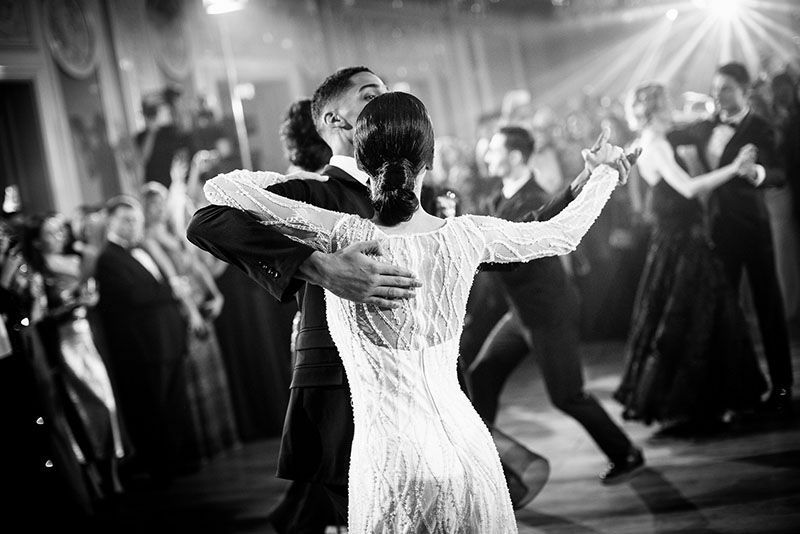
We hope you enjoy the Viennese Waltz music playlist.
Have fun with your Viennese Waltz, and keep an eye on our YouTube channel for our next live-stream dance class.
About Learn To Dance
Learn To Dance is a Ballroom and Latin American Dance School based in Burnham, Buckinghamshire.
Offering regular live-stream classes, as well as useful dance uploads, subcribe to be kept informed when new videos are going live. Send us your suggestions of what you’d like to see us release and we’ll do our best!
Send us your suggestions of what you’d like to see us release and we’ll do our best!
Looking for more personal tuition on your Basic Beginner Viennese Waltz? We provide both in-person and streamed lessons and classes. Check out learndance.co.uk/online for more information.
You can check out our website, or follow us online, at:
Website: learndance.co.uk
Youtube: youtube.com/learndance
Facebook: facebook.com/learndance
Instagram: instagram.com/learndance
Twitter: twitter.com/learndance
Dances
Author: Pavel Gather
Psychologist, Lecturer Salsa and Tango
Dances
Author: Pavel Pavel
Psychologist, Lecturer Salsa
on At the start, you always want to get a quick result. When it doesn't happen, the hypothesis arises that everything takes time. After a conditionally acceptable time, humility comes to mastering pair dances, which, perhaps, is not given, and I will just do what I learned somehow.
This is the most common story of those who believe that the mere act of attending a pair dance class is enough to learn how to dance.
Absolutely not. If you want to really dance well, you have to make an effort outside of the dance class. A good teacher will definitely be needed, but the initiative should be on your side.
1. Listen to music
The most common and accessible advice that is given already in the first lessons. And it definitely works. Music creates a certain atmosphere of the dance and intuitively you want to move to it. It doesn't matter where you listen to music - in the car, on headphones while walking or doing household chores.
An addition that will help you dance better is your active participation in the music. Sing along, dance or simply beat musical accents with any free parts of the body. In the subway, for example, it is enough to tap out bright moments with your fingers, in the car to sing along with sounds, and at home you can jump for pleasure.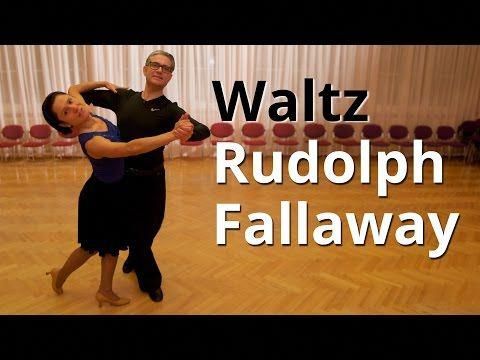
2. Watch videos of good dancers
It's complicated, but also obvious. It’s more difficult, because without recommendations from more experienced dancers, unfortunately, it’s not so easy to find a good quality video on the net (I mean not the resolution quality, but the content itself).
Meaningful video viewing is about building an understanding of HOW dancers make a particular impression on a partner or viewer. Technology is at the heart of everything. Understanding how the pros do it is a big step forward.
It is important to distinguish a show from a disco dance, a staged performance from an improvisation, a stylized dance from an authentic one, etc. Ask for recommendations and dance teachers will always throw off a couple of videos of worthy landmarks.
Tango Z. Showreel.
Online modern tango courses
Tango nuevo is the most advanced version of tango. We can quickly learn to dance from zero to a steep level.
| View details |
3. Dance in salsatecas/milongas/discotheques
A very delicate moment when it is worth coming to the first party. From a technical point of view, most students in 1-3 months have a sufficient set of figures and techniques to come and dance calmly. Psychologically, the same moment can be stretched out for an indefinite time. After all, it is imperative to “not lose face”, “learn more figures” and be sure what to do in case “there is an unfamiliar movement”.
In fact, the partygoers don't really care (except for a small layer of non-professional teachers who want to help inexperienced dancers by treating them as customers in the future). It is important to come and try dancing after a month of classes. You can only with friends or guys from your group. This will be enough to feel the adrenaline and inspiration from the dance.
4. Dance with partners or partners not of your level
The conventional wisdom that you need to practice in groups of your level does not withstand the test of experience. Perhaps now your eyes widened in surprise, and you want to meaningfully read the phrase again. Yes, you saw everything correctly: when you dance with a partner of your level, you don’t grow anywhere.
Perhaps now your eyes widened in surprise, and you want to meaningfully read the phrase again. Yes, you saw everything correctly: when you dance with a partner of your level, you don’t grow anywhere.
It's important to understand that not only does it work one way and you have to dance with cooler dancers, but it works even more effectively the other way. It is no coincidence that teaching pair dances dramatically raises the level of the teacher himself. You have an endless stream of very beginner dancers.
How it works. A more experienced partner needs to be "stretched". It's easy and obvious. With beginners, you need to take more initiative on yourself, see the general pattern of the dance more widely, turn on and insure more, try to be an example and be more careful. The quality of interaction begins to grow significantly. And wonderful partners too.
Dancing with partners of your level doesn't make you grow. Dance with both beginners and more advanced dancers
Dominican Bachata Women's Style Online Course
Want to learn how to hypnotize those around you with the most appetizing part of your body? On the course we will tell you all the secrets.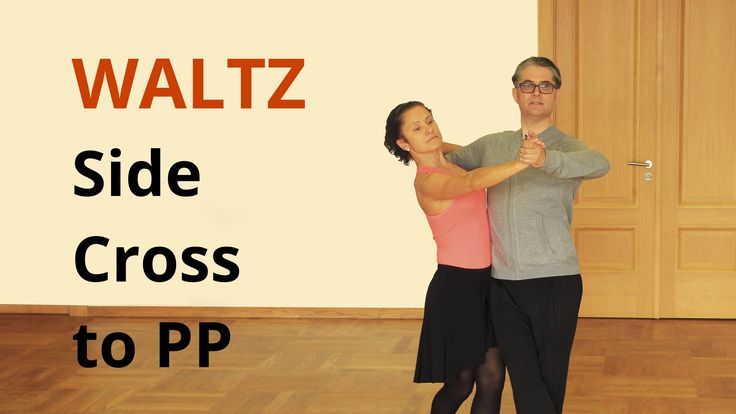
| Interesting |
5. Learn to dance for a partner and for a partner
Turks and Argentines are one of the best partners in the world. In Russia, partners are highly valued. Why? The answer is simple. In Argentina and Turkey, it is not questionable for men to ask another man to lead in one piece or another and give feedback on the quality of the lead. For them, it will be a great shame to hear moralizing from a partner, or even more so to be known in the community as an insecure partner.
In Russia, due to the constant, often far-fetched, opinion that there are more women in pair dances, partners calmly get up and study their partner's part. Such partners then grow into very cool dancers and teachers. In no case do this at parties, only in class. Here we are talking only about the learning strategy. At parties, be yourself.
6. Do not memorize the links
Always try to look deeper and understand the through principle and idea of movement. Understanding what and how is done will make it possible to independently generate any sequences and chips.
Understanding what and how is done will make it possible to independently generate any sequences and chips.
Human memory is limited and there will always be a moment when something will escape and your repertoire will be limited by the size of RAM.
In Argentine tango, for example, there are seven levels of movement construction that, when mastered, will allow you to make millions of combinations. And how many dance sequences can you really remember? In rueda, more than 150 figures dance in a rare circle. It's hard to keep more in mind.
7. Develop your body
Many years of experience in teaching couple dance shows that as soon as everyone pairs up in a class, any progress in individual style ends. But it is the individual style that distinguishes everyone at the disco: partners change, and style is always with you.
The body as the main instrument of dance must be very plastic, responsive and emotional. Surprisingly, not all pair dance schools have a general physical warm-up. It is vital to tune the body and understand how it works.
It is vital to tune the body and understand how it works.
You can always train extra and concentrate more on the basic steps, as their true value is as body work. The sequence of steps is, in fact, the simplest thing that can be in pair dancing. The quality of individual performance determines the craftsmanship.
8. Try on the images of inspiring dancers
A psychological life hack for those who have already mastered the steps, but still feel that there is not enough brightness and drive. Most are terribly afraid of being someone else's "clone". Here the action is the same as under the influence of hypnosis - the more you resist, the more you plunge into an altered state of consciousness.
With a high degree of probability, you are already dancing like someone else's "clone". A meaningful fitting of someone else's image is that you mentally take the image of the one who inspires you (inspiration is critical in this case) and "put on" yourself.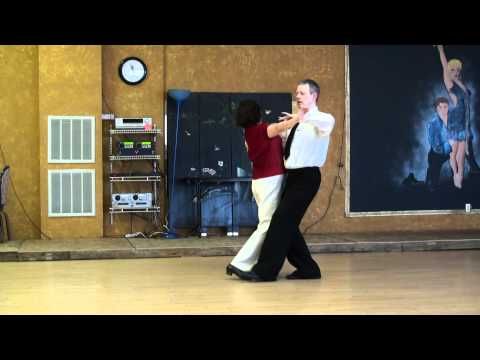 Then you start dancing and trying to feel in general how it is to be able, for example, to be the best partner or the sexiest partner in a disco. This is much more difficult than it seems. But it works extremely efficiently.
Then you start dancing and trying to feel in general how it is to be able, for example, to be the best partner or the sexiest partner in a disco. This is much more difficult than it seems. But it works extremely efficiently.
9. Dance to offbeat music
Habitual rhythms keep you tight. Tango salon or speedy timba leave little room for experimentation and fantasy. Pattern dancing is always noticeable and is reserved for beginners.
The truly new is born outside of the usual. Look for places to experiment. If there is no place, organize self-training. The main thing is not to get carried away, because music determines the style. We bring something new to pair dances, rather than trying to change them.
Search, improvise, don’t be afraid to go beyond, develop in different directions, be inspired by music atypical for the style
10. Try your hand at basic dance directions
dances exist according to their own non-choreographic laws.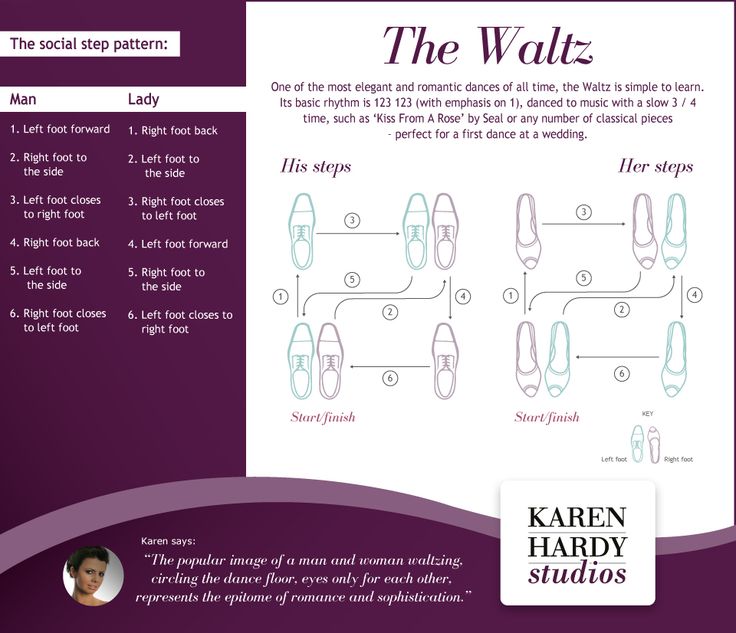
This is the deepest delusion, which has turned into a ceiling for the qualitative development of partner dances. After all, all professional dancers, for example, in salsa or bachata, build their ideas on the basic choreographic principles.
Do not think that choreography is only applicable on stage. Any meaningful movement of the body can be choreographic. In general, try classical or modern choreography. Basically, hip-hop can work too.
11. Look for battle sensations
Pair dances return us to an active position of manifestation of our body. As in the days of our ancient ancestors, we impress the members of the opposite sex by how dexterous, hardy, sexy, etc. we are. Modern laws of the jungle in the entourage of big cities.
If you look around the dance floor, it becomes clear that the majority are clearly herbivores (not in the sense of vegetarians, but in relation to those around them). I am sure that predators are always more interesting in terms of the attractiveness of the image - try to find a counterbalance among herbivores, for example, a cat woman or a lion man.
I am sure that predators are always more interesting in terms of the attractiveness of the image - try to find a counterbalance among herbivores, for example, a cat woman or a lion man.
The conversation is about an internal position, not about aggressiveness. Lability and lack of control are inherent in adolescents, and not in adult self-sufficient people.
Accordingly, even a training or friendly battle gives, on the one hand, practical skills - to make a bright sequence of movements, bring an idea to a climax, show a spectacular feature, on the other hand, develops the psychological basis of the dance - self-confidence, resistance to extraneous attention, self-control and self-control in complex elements.
12. Communicate with professionals
The environment shapes the internal position. Basically, real passionaries of the dance community are ready to openly talk, discuss and support the development of dance in every possible way.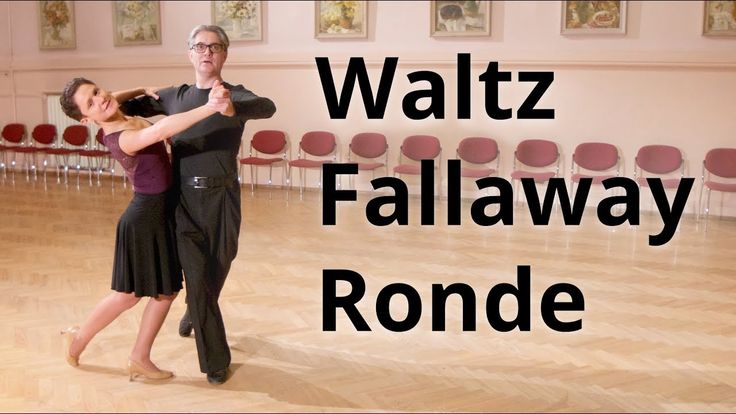 Universal principles and the ideas they articulate have a much longer and more practical perspective than meets the eye.
Universal principles and the ideas they articulate have a much longer and more practical perspective than meets the eye.
Accept that, for example, behind the words "listen to your partner" is not only a beautiful metaphor, but also a practical skill to literally listen to your partner. At the same time, always treat every thought, even the most respected teacher, as a private opinion.
Your skill will lie in finding the scope of the idea even in conflicting opinions. Most often, the contradiction is speculative and the truth lies in the angle of perception or situationality.
Your dancing growth will stop sooner or later. This can happen at the level of three basic steps or years of experience in teaching and show performances. Regardless of your level, the suggested 12 life hacks can get you off the ground and greatly accelerate your dance growth. There is no way here without your motivation and activity. Take your dance development into your own hands. 9Ol000 Dangerous sexuality
Salsa: destroyers of stereotypes
Couple dancing as a source of strength.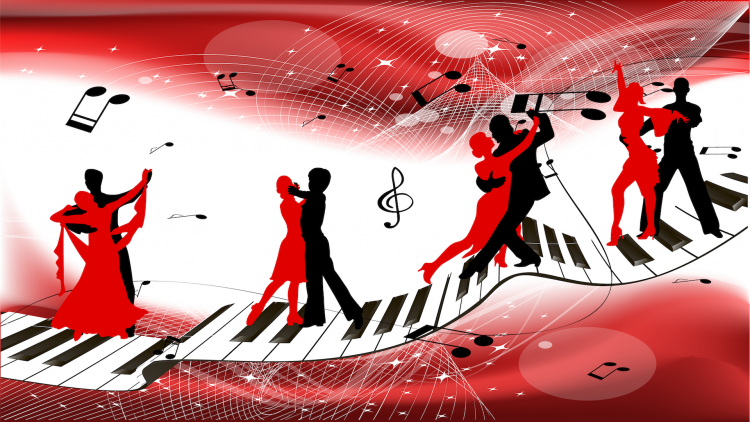
Self-destruction of the couple dance community
The Salsa series as a mirror of the community
Mamita Fridays: salsa, bachata
Destroying the myths about leading pair dances
Does dancing make us better?
The seven deadly sins of teachers
Why we will never dance bachata like the Dominicans
Why tango?
Dispute over musicality
Selection of dances according to alcohol preferences
Where to find inspiration for dancing?
Terrible tango nuevo
Distribution of roles in a salsa party
Argentinean tango through the eyes of a salsa dancer
Is there a predisposition to dancing?
Which is more effective: individual or group lessons?
Sexual overtones in pair dances
Waltz in Russian culture: the history of the emergence and development
Publications of the Music section
and cultural level, a certain generalized image arises, which can be conditionally called the "Russian waltz". Moreover, this very “Russian waltz” is not at all a Viennese waltz in the style of the Strauss father and son, not a Parisian waltz with an unchanged accordion and a cracked baritone of French chansonniers, and not an exquisite Chopin waltz. "Russian Waltz" is a completely different phenomenon, in many ways even more literary than musical.
Moreover, this very “Russian waltz” is not at all a Viennese waltz in the style of the Strauss father and son, not a Parisian waltz with an unchanged accordion and a cracked baritone of French chansonniers, and not an exquisite Chopin waltz. "Russian Waltz" is a completely different phenomenon, in many ways even more literary than musical.
Ilya Repin. Noble summer ball (detail). 1894. Ateneum Art Museum, Helsinki, Finland
Well-mannered obscenity
The ability to dance the waltz today seems to be a sign of aristocracy, but even some two centuries ago this dance was considered completely indecent. In Russia, the waltz was under a strict ban, which secured the order of Paul I to the military governor of St. Petersburg Alexei Arakcheev on December 1, 1797. Along with the waltz, the emperor forbade other "indecent phenomena": wearing sideburns, tailcoats and "boots called boots." In stiff Britain until the middle of the 19th century, a dance in which partners approached each other very closely was condemned by both the official press and the clergy.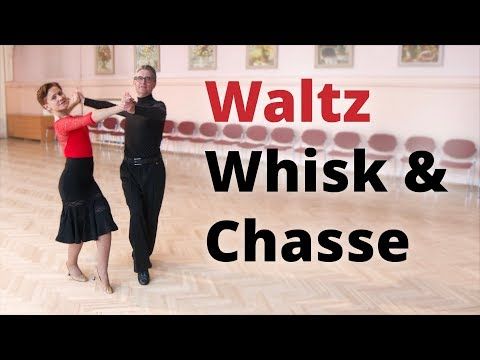 So even Queen Victoria, who ruled at that time, did not advertise that she actually loved to waltz. In 1834, the waltz was first publicly danced in the United States, in Boston, and indignant public figures called the dance "indecent and indecent" .
So even Queen Victoria, who ruled at that time, did not advertise that she actually loved to waltz. In 1834, the waltz was first publicly danced in the United States, in Boston, and indignant public figures called the dance "indecent and indecent" .
Romance “I remember the waltz is a lovely sound” performed by Elena Obraztsova
The waltz was mentioned in many literary works of the 19th century: in Eugene Onegin by Alexander Pushkin, in Masquerade by Mikhail Lermontov. In Leo Tolstoy's "War and Peace" "distinct, cautious and fascinatingly measured waltz sounds" sounded during the first ball of Natasha Rostova - in the presence of the Emperor! By 1869In the year when Tolstoy finished the novel, the aristocrats were already somewhat accustomed to the waltz and began to treat it more tolerantly. A great contribution to the popularization of this dance was made by Johann Strauss, the younger, who for five seasons - from 1856 to 1861 - conducted concerts and balls at the highest invitation at the railway station in the city of Pavlovsk near St. Petersburg and often gave waltzes. Interestingly, the brilliant and carefree Strauss waltzes, despite the fact that many of them were written in Russia, have nothing to do with truly Russian waltzes in spirit.
Petersburg and often gave waltzes. Interestingly, the brilliant and carefree Strauss waltzes, despite the fact that many of them were written in Russia, have nothing to do with truly Russian waltzes in spirit.
Johann Strauss. Waltz "On the Beautiful Blue Danube"
The first Russian waltzes
The history of the Russian waltz began with Alexander Griboyedov, a brilliant diplomat and author of the classic comedy "Woe from Wit". Griboedov also wrote music, and one of his most famous works was Waltz No. 2 in E minor, composed by the writer in 1824, uncomplicated, but soulful and heartfelt.
See also:
- Find and don't give up
- Conductor's baton is ergonomics
- Autumn playlist
Alexander Griboyedov. Waltz No. 2 in E minor
The first "real" Russian waltz was Mikhail Glinka's Fantasy Waltz (piano version of 1839).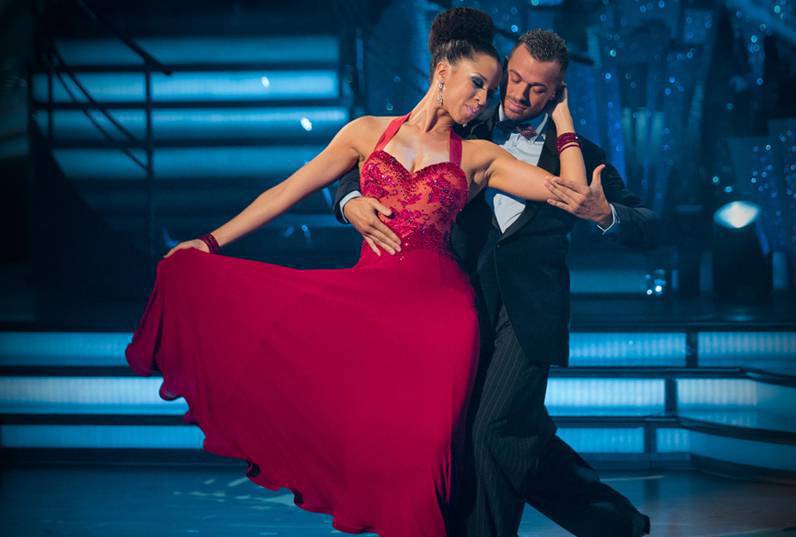 It was he who became the model for most domestic "literary" waltzes.
It was he who became the model for most domestic "literary" waltzes.
Mikhail Glinka. Waltz-Fantasy (orchestral version)
Surprisingly similar to Waltz-Fantasy in their nostalgic character and minor mood are Aram Khachaturian's waltz from the music for Lermontov's drama "Masquerade", and Georgy Sviridov's waltz from musical illustrations for Pushkin's story "The Snowstorm", and waltz by Sergei Prokofiev from the opera "War and Peace" - and many other waltzes from film adaptations and productions of Russian classics.
Sergey Prokofiev. Pushkin's Waltz No. 2
Only Pyotr Tchaikovsky's Waltz from the opera "Eugene Onegin" stands apart in this row - luxurious, joyful, brilliant. But for Tchaikovsky, the waltz was much more than just a dance form - one of the favorite genres in which the composer most often expressed innermost feelings.
Pyotr Tchaikovsky. Waltz from the opera "Eugene Onegin"
Memories of Waltz
Contribute to the nostalgic-literary attitude to the waltz and the so-called "old Russian waltzes" widely published in Soviet times - in fact, written mainly at the turn of the 19th-20th centuries. These include The Waves of the Amur (1903) by the Russified German Max Kyuss, Over the Waves (1884) by the Mexican Juventin Rozas, the famous Autumn Dream (1908) by the Englishman Archibald Joyce, who later became the "character" of Matvey Blanter's famous song "In frontline forest" (1943), and many others.
Max Kyuss. Waltz "Amur Waves"
Matvey Blanter. “In the forest near the front”
In the first decades of Soviet power, 1920-30s, the waltz took a strong position on the “ideologically correct” dance floor as “our answer” to American jazz, which was actively conquering the world at that time. Moreover, for many Soviet people (including professional musicians), the very word "jazz" meant in general all the music that was played at dances, so the waltz was invariably included in the repertoire of pop-jazz orchestras. It is interesting that the composers who composed music for these orchestras, of all the varieties of the waltz, took as a basis precisely the minor-lyrical, Russian version, quite in the spirit of those very “old waltzes”.
Dmitry Shostakovich. Waltz from Jazz Suite No. 2
Waltz has been part of the culture of Russian officers for more than a century, the ability to dance the waltz is still taught at the Suvorov and Nakhimov schools. And during the Great Patriotic War, the waltz, along with the tango, became one of the iconic dances of the brief periods of calm between battles. New waltzes gained popularity, performed with words like songs, but written in the same slightly sad, nostalgic vein - "The Blue Handkerchief" (1940) Jerzy Petersbursky, "Spark" (1943) by Matvey Blanter and others.
Jerzy Petersbursky. "The Blue Handkerchief" performed by Claudia Shulzhenko
The Waltz is alive
The attitude towards the waltz is somewhat different now among those who are seriously involved in ballroom dancing, for whom the waltz is a hobby or even part of their profession. After all, this dance, despite the nostalgic veil, is included in the modern program of sports competitions in dancing. The literary and general cultural component for sports dancers, as a rule, is not as important as the number of measures or the tempo and genre of the waltz being performed - slow, coming from the old Boston waltz, and fast, also called Viennese.
Mass dance competitions. Viennese waltz
Dance teachers of the early 19th century were at one time very dissatisfied with the appearance and rapid spread of the waltz, because, unlike the many diverse and rather intricate dances that existed in that era, it was possible to master the movements of the waltz in just a couple of lessons.